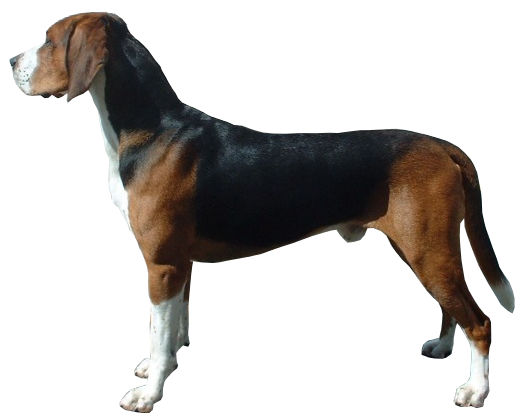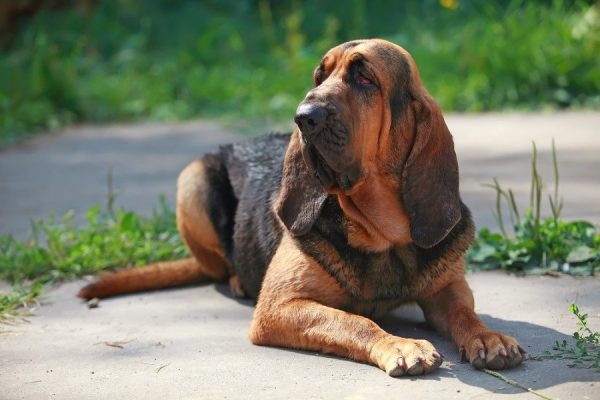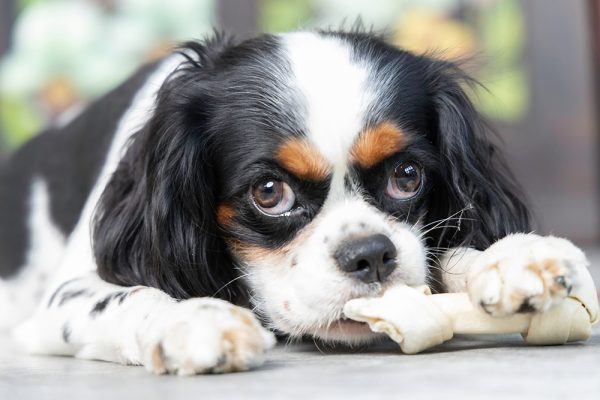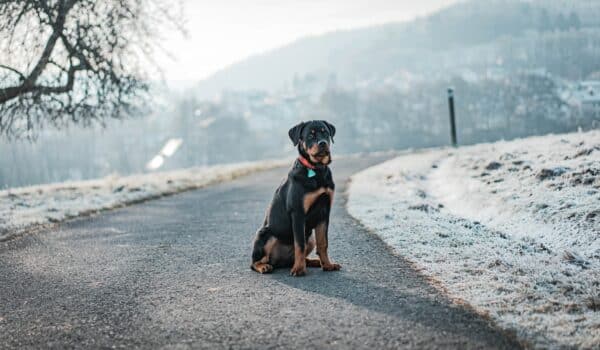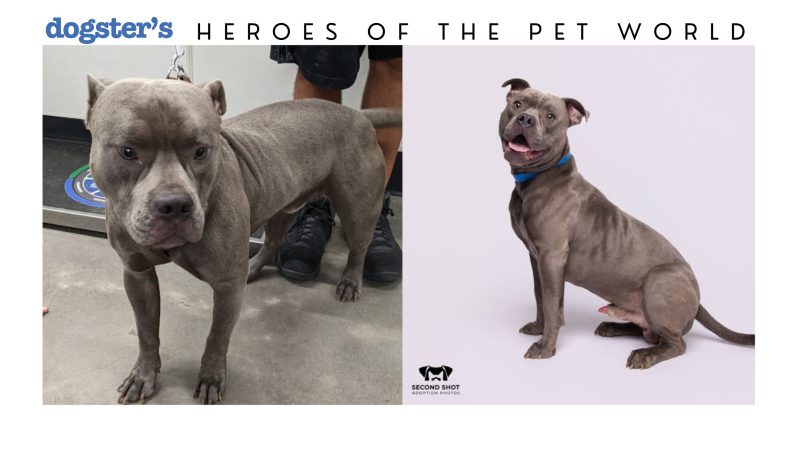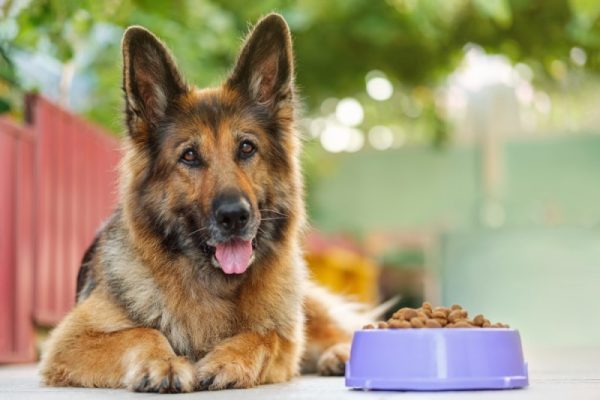In this article
View 8 More +The breed is rarely seen outside Scandinavia but is popular in its homeland of Sweden, however, as well as being a skilled sight and scent hound, it is known for being a good family pet. Owners will need to provide their Hamiltonstövares with plenty of exercise to ensure it is physically and mentally stimulated.
Breed Overview
Height:
19–24 inches
Weight:
40–75 pounds
Lifespan:
10–13 years
Colors:
Black, tan, white
Suitable for:
Active families that are experienced at keeping dogs
Temperament:
Friendly, patient, lively, energetic, high prey drive
The Hamiltonstövare originated in Sweden, where it was developed by Swedish Kennel Club founder Count Hamilton. Although it has gained some popularity in pockets around the world, it remains a rarely seen breed outside Scandinavia and especially Sweden, where it remains a popular foxhound breed.
As well as being used as a skilled hunter, relying on both its scenting ability and sight, it also makes a good family pet. These dogs are friendly, get on with most people, and enjoy lazing around at home. However, owners do need to ensure they provide enough physical exercise and mental stimulation to keep the breed active and alert. It is known for having a very high prey drive, and its high exercise requirements mean that this breed is best suited to owners with foxhound experience.
Read on for more information on the breed and to determine whether this is the right breed for your home.
Hamiltonstövare Dog Breed Characteristics

Hamiltonstövare Puppies
The Hamiltonstövare is an uncommon breed outside Sweden, but you may still be able to find breeders if you search carefully. Finding the right breeder is important. The first few weeks of your puppy’s life go a long way to determine what kind of dog it will grow up to be. If it is largely ignored and doesn’t get any social interaction apart from 5-minute visits from prospective buyers, it can grow up to be aloof around strangers and may even become an anxious adult.
Ask to meet the Hamiltonstövare puppy and at least its mother. Ideally, you should meet the puppy on two or three occasions, and at different times, although this might not be possible if you have to travel a long way.
Alternatively, you might be able to find this breed in rescues. They have a high prey drive and need a lot of exercise, which some owners may not have been prepared for when taking on a foxhound of this type. Get as many details as possible from the rescue and meet the dog before you take it home.
The Hamiltonstövare is a foxhound that relies on both sight and its sense of smell to hunt. Like all foxhounds, they need a lot of exercise, and this should start when the dog is still young. And, because it has a high prey drive, the Hamiltonstövare will need to be good on a leash. You won’t generally be able to let this breed off a leash unless you are confident with recall and are in a secure, enclosed environment. Start leash training early, and get on with socialization and training as soon as you get your new dog home.
Hamiltonstövare Dog Breed Origin & History
First developed in the late 19th Century, the Hamiltonstövare was bred by Count Hamilton who would become one of the founders of the Swedish Kennel Club. However, while the breed itself originates in Sweden, Hamilton used a lot of other hounds to create the breed, so the Hamiltonstövare contains DNA from around the world.
The breed started to show up in show rings and exhibitions in the 1880s but wasn’t accepted by the Swedish Kennel Club until 1921.

Temperament & Intelligence of the Hamiltonstövare 🧠
Unlike a lot of foxhounds, which are bred to hunt in packs, the Hamiltonstövare hunted individually or in pairs. This does affect the breed’s temperament somewhat when compared to other similar breeds. It will require more socialization to ensure it gets on with other dogs.
This means training is also an important part of owning the breed, and it may take some time and patience to combat some of the independent nature of the dog.
However, as well as being a good hunting dog, and still used for this purpose in Sweden where the breed is most popular, they do make good family pets. However, it is generally recommended that they be kept by those with experience in raising and keeping foxhounds because they can be a challenging breed in some respects.
Are These Dogs Good for Families? 🏡
The Hamiltonstövare can make a great family dog. It is lively and energetic, which means that it will enjoy playing and will enjoy long walks and hikes with the family. They will especially enjoy getting outdoors on adventurous days out, but will also enjoy time spent in the garden throwing a ball around or indoors playing with toys.
When indoors and outside playtime, the breed is known for being quite lazy and will curl up with its humans for some quality petting time. However, the playful nature of the breed means that it might be too much for small children. While it won’t intentionally cause harm, the Hamiltonstövare can easily bowl a small child over and accidents do happen.
Does This Breed Get Along with Other Pets? 🐶 😽
Unlike other foxhounds, the Hamiltonstövare was bred to work alone or in pairs. This does mean that whereas other similar breeds naturally get along with other dogs, it takes a little more work for Hamiltons to form a pack. Ensure good socialization from a young age and, if you want to bring one into a home where there are existing dogs, make introductions gradually to give both dogs the chance to get used to each other.
Once the Hamilton does form a bond with another dog in the home, though, the two can become strong cohorts and the Hamilton will enjoy having a playmate to cause mayhem with.
Due to the high prey drive of the breed, you will also need to make introductions with cats very gradually. Let the dog get used to the smell of the cat, using a stairgate or some other means of separating the two but still allowing them to see and smell one another. And always give the cat an escape route as well as a place of its own to escape to.
You should never leave any dog alone with smaller animals, and this is especially true of this type of dog.

Things to Know When Owning a Hamiltonstövare:
The Hamiltonstövare makes a good family pet, although may not be suitable for very young children because they are very boisterous. It will also take gradual introductions if you want to introduce one of these dogs to other dogs or cats, but it is possible to integrate a Hamilton into an existing home pet pack.
The size of this dog makes them suitable for apartment living, but it would certainly benefit from having outdoor space of its own to burn off energy and meet its daily exercise requirement. And, as with any breed, early socialization and training are important to help ensure that you have a well-behaved and sociable adult Hamilton.
Food & Diet Requirements 🦴
The Hamilton is an active and fairly large foxhound breed, which means that it will eat a fair amount of food. Weigh your dog to ensure you’re feeding a suitable amount but expect to feed between 2 and 3 cups a day. Make adjustments according to your dog’s activity level, as well as any guidance or advice you’ve been given by your vet. And, if you feed treats, which should only make up a maximum of 10% of your dog’s daily calorie intake, reduce the amount you feed accordingly.
You can feed wet or canned food instead and should follow the feeding guidelines on the packaging to meet your dog’s daily requirements.
Feeding a combination of dry kibble and canned wet food means enjoying the best of both dog food worlds. Dry food is more shelf-stable than wet food and typically creates less mess. It can also be left down for your dog to graze on, although you will need to measure the amount you feed to make sure you don’t overfeed. A good way to feed both is to give half the daily allowance of dry food and half the allowance of wet food. This ensures your dog is still having its nutritional requirements met by the food you give but makes it easy to track the amounts you provide.
Like all animals, dogs need water to survive, and your dog must get enough water every day. They do get some water from their food if you feed them wet food, but you must provide free and easy access to clean drinking water.
Exercise 🐕
The Hamiltonstövare is a foxhound and does need a lot of exercise each day to ensure they are fit and healthy. Provide at least 90 minutes of exercise, which can include walks. Walks alone, however, will likely not provide enough exercise for this energetic breed. Long hikes, jogs, and canine sports like canicross can help sate the Hamiltonstövare’s physical needs.
Canicross is cross-country running with your dog. Typically, it uses a harness and hands-free leash. It does take some training and you should ensure you have the right equipment to prevent your dog or you from getting injured. Scent sports are also good options for this breed and will help exercise the dog’s mind as well as their body.
Training 🦮
This independent breed does need early and ongoing training to help overcome what can seem like a stubborn nature. In reality, the Hamiltonstövare was bred to hunt, and it would have been left to chase prey to the ground without too much human intervention. Therefore, they are only living up to these requirements and aren’t disobeying you for the sake of it.
Puppy classes will help show you how to teach your dog and they will teach some of the basic commands that will prove invaluable. They are also a good opportunity to socialize your dog. Socialization is important for all breeds, including the Hamilton. It prepares the dog for unexpected events and new surroundings, ensuring that they are confident and comfortable most of the time.
Puppy classes are a good way to start socializing a dog because everybody there is in the same boat and other puppy owners should be understanding of your dog’s behaviors. Socialization should continue outside puppy classes, however. Invite people around to the house when your dog is still young. Take them on a variety of walks to different places and have them meet new people and other dogs.
Grooming ✂️
The hound coat of the Hamiltonstövare is short and wiry, although it does have slightly longer hair at the base of the tail and around the backs of the legs. Grooming is relatively easy, although you and your dog will benefit if you give daily brushes, or brush at least three times a week. It will only take a few minutes but it enables you to get rid of dead hairs so they don’t end up on furniture or clothes. You shouldn’t need to shave your Hamilton’s coat.
Claws need trimming fairly regularly, typically every 2 or 3 months. Because this is an active breed, if the Hamiltonstövare gets a lot of its exercise on tarmac or other abrasive surfaces, claws may not need clipping as frequently. You can have a professional groomer clip the claws for you, and some pet store chains also offer clipping as a service.
Poor dental health is common in dogs, primarily because they can’t care for their own teeth. While dental chews can help, they are only meant as a supplement to regular brushing. Get a dog toothbrush and brush three or four times a week. There is no need for mouthwash or other dental treatments, but you should have your dog’s teeth checked annually.
Health and Conditions ❤️
Most Hamiltonstövare are healthy dogs, but they can be prone to certain conditions and illnesses. Hip and elbow dysplasia are more common than in a lot of other breeds, and both can be uncomfortable and painful and may eventually lead to lameness and arthritis. The breed is also more susceptible to epilepsy than is normal.
- Ear Infections
- Elbow Dysplasia
- Hip Dysplasia
- Epilepsy
- Bloat
Male vs Female
Generally, males can be more stubborn, although females are considered more independent, which means training either gender can be more than a little difficult. The male will grow to be slightly taller and heavier than the female, though, and the male tends to be more aggressive and may be preferred by those looking for a working hunting dog.
With that said, individual character is more important in determining the performance and traits of a dog, along with socialization, training, and upbringing.

3 Little-Known Facts About the Hamiltonstövare Dog Breed
1. Their Original Breeder Set Up the Swedish Kennel Club
The Hamiltonstövare was first bred in the 19th Century by Count Hamilton. Hamilton was a dog enthusiast and keen hunter and went on to found the Swedish Kennel Club. The Kennel Club was founded in 1889 but the Hamiltonstövare was not accepted by the group until 1921, because it was originally bred from several other hound breeds, and it took time for standards to develop.
2. The Hamiltonstövare Hunts Alone
Most foxhounds hunt in packs, working together to track, chase, and, ultimately, catch their prey. However, the Hamiltonstövare is more accustomed to hunting alone or in pairs. This means that while other similar breeds will naturally get along well with other dogs, the Hamiltonstövare can be more difficult to integrate into a pack.
3. They Aren’t Ideal for Inexperienced Owners
The high energy requirements and independence contribute to the fact that the Hamiltonstövare is not recommended for inexperienced owners. This is further exacerbated by the dog’s need to be around its humans. If left alone, and allowed to get bored, for too long, the Hamilton can become very vocal and make a lot of noise. They can also become destructive and exhibit other signs of separation anxiety.
So, as well as being better suited to those with experience of owning foxhound breeds, they are also best suited to families that won’t have to leave them alone all day.

Final Thoughts
The Hamiltonstövare is a Swedish foxhound breed that is common in their homeland but rarely seen outside Scandinavia. It is a large foxhound that is very energetic and while other similar breeds do well in packs, thanks to their original breeding as pack hunters, the Hamilton, as they are commonly referred to, hunts solo or in pairs. They have a very independent nature but are typically food-motivated so training shouldn’t be too challenging, but socialization will be critical.
These dogs need a lot of exercise every day and will benefit from taking part in canine sports, especially those that demand the use of the Hamiltonstövare’s powerful sense of smell.
Featured Image Credit: Chien Courant De Hamilton, Desaix83, Wikimedia Commons CC SA 3.0 Unported
